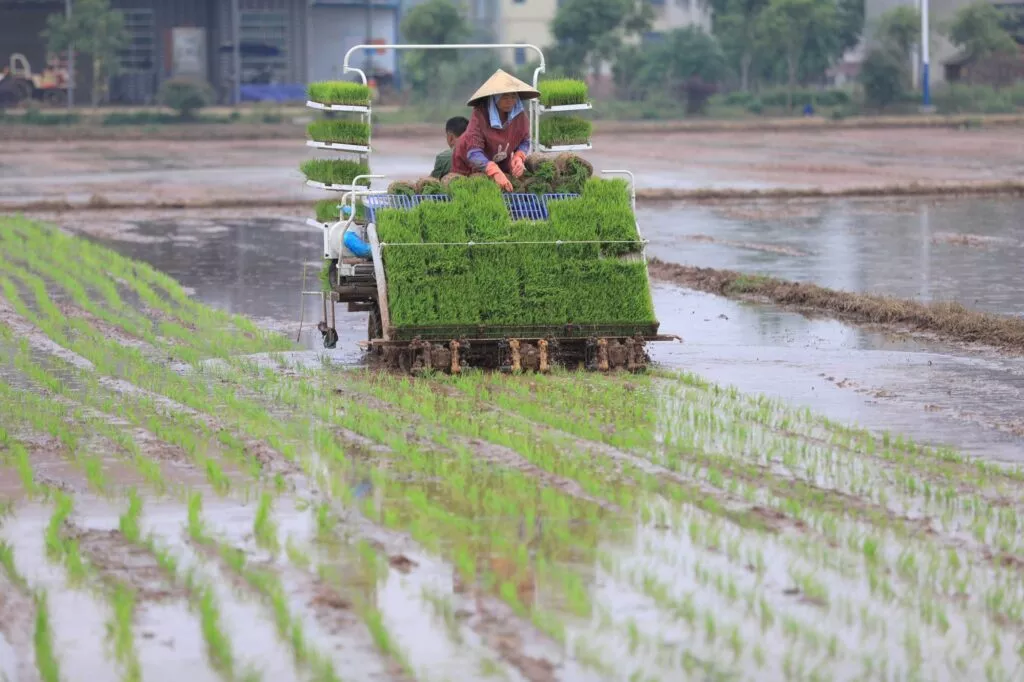
China, a global powerhouse with a vast arable land – amounting to over 10 per cent of the world’s total – faces an enduring challenge: securing enough food for its population. Despite significant strides in domestic production, the country remains deeply dependent on food imports, an Achilles’ heel that distinguishes it from major competitors like India, the United States, and the European Union, all of which are self-sufficient in food supply. The latter two even rank among the largest food exporters. Since the early 2000s, China’s import dependency has risen sharply, despite somewhat successful state efforts that increased domestic production by over 50 per cent from 2003 to 2013. By 2020, China’s food self-sufficiency ratio, which measures the portion of demand met by domestic production, had fallen to 65 per cent. Projections suggest this figure will decline further in the coming decades, underscoring a vulnerability. More than a domestic challenge, this deficit holds profound implications for China’s foreign policy. Beijing frequently leverages its economic ties in diplomacy. However, its reliance on food imports leaves it exposed to geopolitical risks, particularly as global tensions rise amid its pursuit of ambitious foreign policy objectives. China’s agricultural deficit is thus critical for understanding its international posture.
Why Can’t China be self-sufficient?
China’s path to food self-sufficiency is fraught with growing challenges as it grapples with a shrinking pool of farmers and arable land. Indeed, rising wages for factory jobs in urban areas have reduced incentives for agricultural work, prompting many farmers to abandon their land in pursuit of better opportunities in cities. This rural exodus is compounded by destructive farming practices, as well as the relentless expansion of new infrastructure and real estate developments, that have resulted in a decreasing amount of arable land. Between 2013 and 2019 alone, the total arable land area dropped by over five per cent. Moreover, as China’s standard of living and per capita income have increased, so have the consumer demands for “non staple” food products like meats, oil, fruits, and dairy. In parallel, health and safety concerns have driven a surge in demand for imported goods, perceived as higher quality and safer. For instance, baby formula now accounts for more than 45 per cent of China’s dairy imports.
Domestic Strategies to Address Import Dependence
Faced with the critical challenge of food import dependency, China has taken strides to improve its output and boost resilience. Domestically, the government has prioritized agriculture in its policymaking. For two decades, the annual “No. 1 Document”, the first policy statement issued by the central authorities, has focused on “agriculture, the countryside, and farmers.” In line with this emphasis, the state has set the ambitious goal of preserving at least 120 million hectares of arable land and converting 66.7 million hectares into farmland. It has also purchased millions of acres in foreign countries, particularly in Africa. To counter the rural exodus to more lucrative urban employment, China has introduced policies aimed at increasing the appeal of farming. This includes abolishing a millennia old agricultural tax and implementing minimum support prices for grains, ensuring a financial safety net when market prices dropped. In 2023, the government budgeted 10 billion yuan toward financial subsidies to support farmers.
International Efforts: The Role of the Belt and Road Initiative
However, China’s strategy extends beyond its borders. The Belt and Road Initiative (BRI), a trillion dollar infrastructure investment project across the developing world aimed at creating a “New Silk Road,” serves not only to expand China’s geopolitical influence, but also mitigate its own domestic vulnerabilities. By securing trade and resource access, the BRI helps China diversify its agricultural imports, reducing the risk of overdependence on a single supplier. The BRI has taken on a major role in China’s agricultural strategy, an aspect of its policymaking that has garnered enhanced coordination and substantial funding from the highest levels of the Communist Party. In addition, BRI partner countries have become key players in China’s agricultural strategy, participating in cooperative ventures to establish new agricultural bases, processing centers, and warehouses. These states are essential to China’s efforts in building a robust and global food supply chain. While the 65 BRI countries account for just a third of China’s total food imports, 14 of them possess vast expanses of low-yield arable land. With strategic investment in machinery and infrastructure, these regions hold significant potential for boosting agricultural productivity and strengthening China’s food security.
Strategic Risks of Food Dependency
China’s anxieties over its food import dependency are certainly warranted. Its biggest rival, the United States, is the world’s largest food exporter and is well beyond food self-sufficiency. Until the 2019 trade war, the U.S. was China’s largest food import partner, a position now held by Brazil. U.S. allies such as Australia, New Zealand, France, and other European Union (EU) countries as key suppliers for critical food categories. As the world’s largest importer of pork, beef, and dairy, China heavily relied on the EU and the United States to meet its demand. This reliance exposes Beijing to significant strategic risks. In the event of a major crisis or war, food-exporting nations could wield their agricultural dominance as bargaining power, potentially triggering large-scale food shortages or economic shocks. The ongoing war in Ukraine and the resulting sanctions against Russia have heightened China’s awareness of its own precarious position, leading to increased investment in its massive food stockpiles as a buffer. As China’s role in international affairs grows, so does the importance of this issue. Its efforts to mitigate this food insecurity, as well as the counterstrategies of its rivals will play a critical role in shaping the trajectory of China’s rise.
Edited by Alice Viollet
The opinions expressed in this article are solely those of the author and they do not reflect the position of the McGill Journal of Political Science or the Political Science Students’ Association.
Featured image by East Asia Forum
